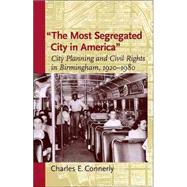
What is included with this book?
| List of Illustrations | ix | ||
| List of Tables | x | ||
| Acknowledgments | xi | ||
| Introduction | 1 | (12) | |
| 1. Big Mules and Bottom Rails in the Magic City | 13 | (23) | |
| 2. Planning and Jim Crow | 36 | (33) | |
| 3. Planning, Neighborhood Change, and Civil Rights | 69 | (33) | |
| 4. "The Spirit of Racial Zoning" | 102 | (27) | |
| 5. Urban Renewal and Highways | 129 | (38) | |
| 6. Civil Rights and City Planning | 167 | (50) | |
| 7. The African American Planning Tradition in Birmingham | 217 | (24) | |
| 8. The Evolution of Black Neighborhood Empowerment | 241 | (28) | |
| Epilogue | 269 | (20) | |
| Notes | 289 | (62) | |
| Index | 351 |
The New copy of this book will include any supplemental materials advertised. Please check the title of the book to determine if it should include any access cards, study guides, lab manuals, CDs, etc.
The Used, Rental and eBook copies of this book are not guaranteed to include any supplemental materials. Typically, only the book itself is included. This is true even if the title states it includes any access cards, study guides, lab manuals, CDs, etc.